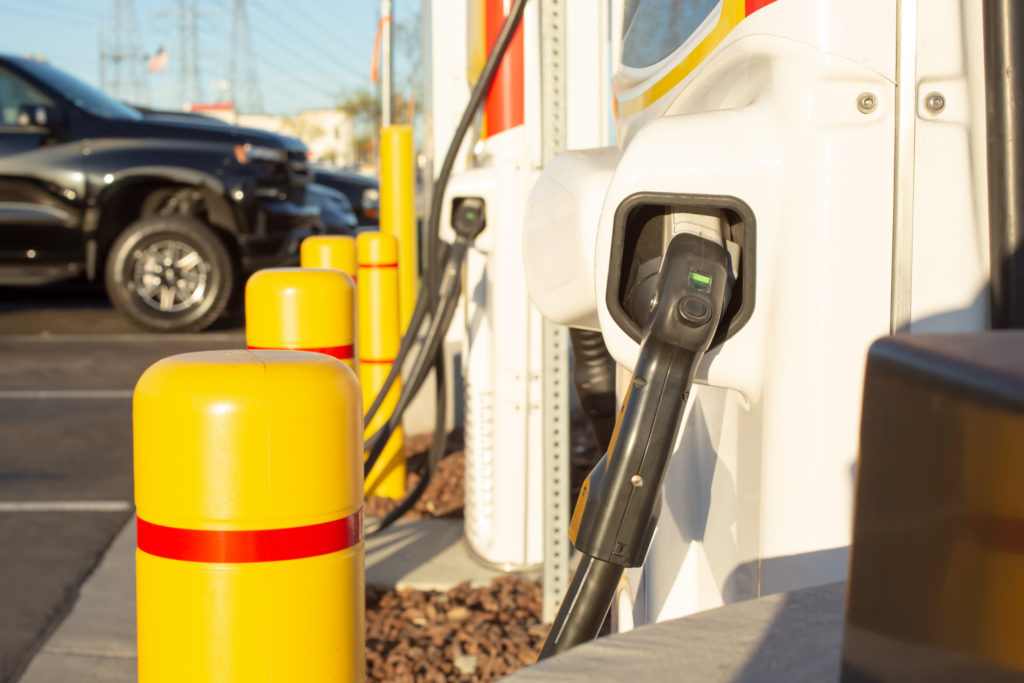
The United States has a big opportunity to create well-paid jobs while transitioning to a clean energy future, but workers must be a top priority.
The Inflation Reduction Act (IRA) offers the United States a chance to create well-paid jobs in emerging industries like electric vehicles and solar, but work remains to ensure American workers benefit, witnesses told Members of a key congressional committee during a hearing last week.
The House Select Committee on the Climate Crisis met on Sept. 27 to examine how the IRA can lower costs, create jobs, and reduce pollution. Speakers included John Nassar, legislative director of the United Autoworkers union (UAW) and Samantha Sloan, vice president of Global Policy, Sustainability and Marketing for First Solar, Inc., both of whom testified that the IRA has the potential to provide a big boost to American industries.
“As we work toward the future of clean transportation, it will be critical to ensure this transition benefits American workers in both the short and long-term and enhances U.S. competitiveness and economic security,” Nassar said.
Nassar highlighted the significance of the IRA when it comes to electric vehicles (EVs), explaining that the new law will help boost American production while providing support needed to speed up the transition to EVs. With production ramped up, new job opportunities for labor workers become available. These new jobs have the potential to offer workers a chance to earn sustainable living wages and have a voice in their workspace via unions.
There’s a long way to go, however. Right now, the U.S is “behind other nations in public and private investments needed to make the U.S. a competitive player in vehicle electrification,” Nassar said.
The Biden administration’s goal is to have at least 50% of new vehicles be EVs or Plug-in Hybrids (PHEVs) by 2030. But according to Nassar, “EVs and PHEVs combined to represent 4% of U.S. auto sales in 2021 and EVs face challenges to mass adoption,” including that they are more costly and the electrical grid is unprepared to handle so many new EVs.
The passing of the IRA takes on some of these issues, Nassar explained, as it provides major incentives to boost domestic production of EVs. In addition, the Biden administration has announced nearly $5 billion will be made available to build out an electric vehicle charging network over the next five years and $3 billion will be allocated to advance the domestic EV industry in communities that have historically been part of the auto industry, Nassar said.
Recent investments in EV production facilities in states such as Tennessee, Georgia, Michigan, North Carolina, and Kentucky can help turn America into a competitive manufacturer of EVs, Nassar said.
“The auto industry’s supply chain extends far and wide throughout the country,” Nassar said. “Fortunately, the Inflation Reduction Act and other aforementioned laws put us on the right track, yet more work remains.”
To progress in the market, the U.S “must support the creation and preservation of good union jobs,” Nassar noted. The UAW is well positioned to take part in the transition to EVs, as it has around 200,000 members in auto-related manufacturing throughout the country from Michigan to Texas. Members of the UAW are currently working on “technology vehicles that include battery electric (Chevy Bolt, GMC Hummer, Ford F-150 Lightning, Ford E-Transit), plug-in hybrids (Jeep Wrangler PHEV, Jeep Grand Cherokee PHEV, Ford Escape PHEV, Lincoln Corsair PHEV), and autonomous vehicles (GM’s Cruise Autonomous Vehicle,” Nassar testified.
“These workers have a high baseline knowledge of manufacturing and a familiarity with manufacturing training programs,” Nassar said.
But there are challenges for workers. Between 2006 and 2021, “average hourly earnings for production workers in auto assembly declined by 21%, while wages in the auto parts sector have decreased by 19%,” Nassar noted. This was the result of competition with foreign auto parts manufacturers and the implementation of automation within the assembly lines, Nassar said.
To combat this problem, the UAW has been hosting “joint training programs [that] work hand in hand with local training coordinators to determine what additional education and training is needed for journeymen and apprentices when innovative technologies emerge, such as EVs.” As the shift continues, communities must begin training their workers in the automotive industry, especially those displaced by automation and newer technology.
The future of the EV market depends on the success of our autoworkers, Nassar cautioned. Without proper training during this massive transition to a newer age, foreign automakers will remain outcompeting the U.S., Nassar added. Automakers are the backbone of American manufacturing and must be made a priority, he added.
“For the transition to benefit auto workers, the entire supply chain, from the gathering of minerals needed to power batteries to the manufacturing of the battery and other parts to final assembly, must support the creation and preservation of good union jobs,” he said.
Sloan, meanwhile, focused her testimony on the solar supply chain.
China dominates the global solar supply chain through “unfair and illegal subsidies and anti-competitive practices that have decimated American solar manufacturing,” Sloan said. (Editor’s note: She’s right!)
But Sloan noted that the Inflation Reduction Act provides renewed hope, as it will create “America’s first durable solar industrial strategy and an opportunity to dismantle China’s dominance of solar manufacturing value chain.”
In Ohio, First Solar is building a solar factory that is forecasted to “establish a highly efficient manufacturing template for our next generation technology, delivering higher efficiency and wattage solar panels, while lowering costs on a delivered basis,” Sloan said.
With this manufacturing template comes more well-paying job opportunities. Sloan stated that First Solar is expected to have “3,000 employees on our payroll by 2025,” and it “is estimated that we will support approximately 15,000 indirect jobs by 2025.” Moreover, American manufactured solar is projected to add $3.2 billion to our economy, while using American materials such as glass and steel.
Want to find out more? Click here to watch the entire hearing.
